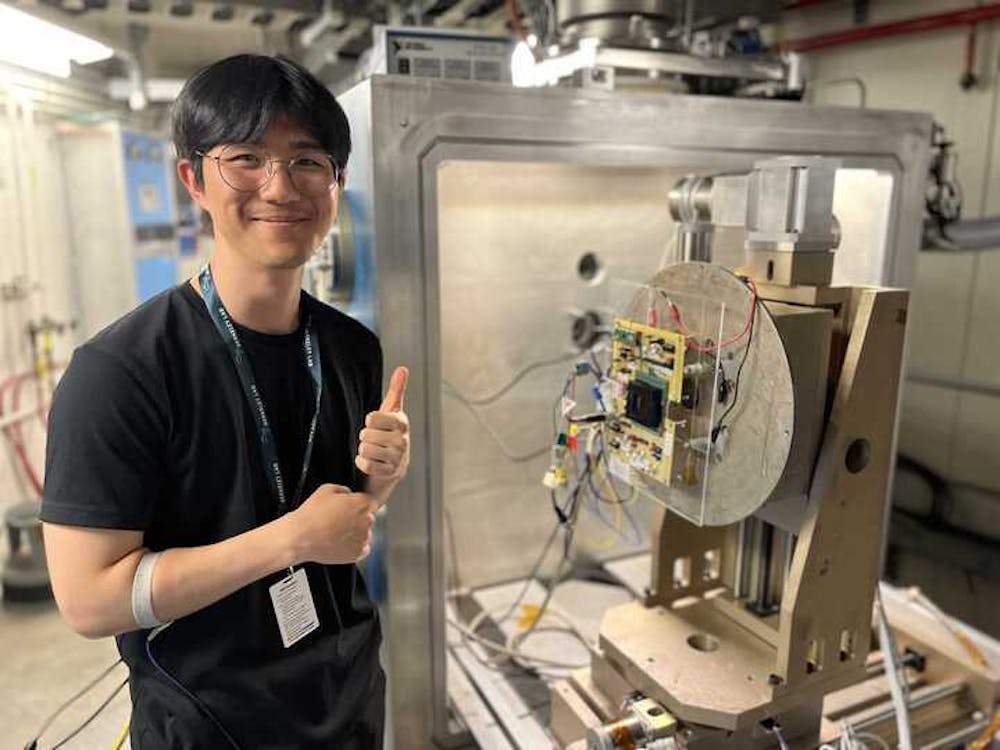Indiana University announced on Oct. 10 it will invest $111 million over the next several years in the microelectronics and nanotechnology industries.
This move comes as part of their ongoing collaboration with the Crane Division of the Naval Surface Warfare Center, the world's third-largest naval facility, bolstering their 20-year symbiotic relationship.
Daniel Loveless, IU associate professor of intelligent systems engineering, said the primary focus of the endeavor is to address the growing demand in the microelectronics workforce.
Microelectronics are tiny electronic components and circuits used in devices like smartphones and medical equipment for compact, high-performance functionality. Loveless said the global share of US semiconductor production has significantly declined over the last few decades.
“Microelectronics technology is unlike anything humanity has ever invented,” Loveless said. “It is a high-impact area that advances so rapidly, and people take for granted how dependent they are on it.”
Russell Mumper, IU’s vice president of research, said the partnership aligns with IU’s 2030 Strategic Plan. The plan encourages IU to expand its affiliation with various industries, and Mumper said their investment in the microelectronic industry is the perfect opportunity to do so.
Last year, IU launched Faculty 100, a hiring initiative aiming to recruit 100 new tenure-track faculty to the Bloomington campus. Loveless said 25 of these 100 incoming faculty members will be in pertinent roles in areas such as microelectronics, cyber-physical systems, artificial intelligence, machine learning and nanofabrication.
The NSWC base is situated about 40 minutes away from IU in Crane, Indiana. Mumper said the base has harnessed the academic talent pool at IU. The university’s R1 research institute status, signifying its top-tier research activity and productivity, further cements its position as a critical collaborator. Mumper said IU students can work with Crane full-time in the future as well, noting Crane’s workforce demand.
“The workforce is capitalizing on the superb students at IU and there are specialized opportunities for them,” Mumper said. “We envision that hundreds if not thousands of students will benefit from this partnership.”
Mumper said this is an opportunity for the state to harness the potential of having a large naval base as a beacon to attract big businesses and contractors, which can offer high-paying jobs.
With the ongoing advancements at IU, Loveless said Ph.D students, as well as undergraduates, can gain various research opportunities in microelectronics and related fields. He is teaching a course this semester on microelectronics radiation effects where students study the behavior of electronics in extreme environments. The NSWC grant funded around 10 students to work in the Lawrence Berkeley National Laboratories Cyclotron facility, hosting one of four particle accelerators in the U.S., to simulate microelectronic behavior in space as part of their capstone project.
IU will also invest $10 million from the $111 million in a brand-new institution called the Center for Reliable and Trusted Electronics, spearheaded by Loveless. He said the center will concentrate on research initiatives surrounding radiation effects on microelectronics.
However, Benjamin Robinson, IU associate professor of Germanic Studies, voiced his concern about the proposal. He said he vehemently opposed the partnership for two main reasons. He said the humanities departments at IU are being increasingly neglected in favor of shifting focus towards advancements in technology and AI, which goes against the fact IU was built upon its commitment to the greater good through the humanities and liberal arts programs.
He said these core values of IU are being further manipulated by external parties and highlighted IU should not be making such a grand investment with a warfare department at a time when wars rage on several fronts across the globe. He advocated for increased attention toward language and cultural education. He further said IU’s job as the number-one Ph.D granting institution in humanities is to foster a thoughtful citizenry, but the university is now switching its priorities.
He feels IU needs to prioritize investing in society, healthcare and equality, and constraining tech growth. He also insists IU focuses too much on the 2030 Strategic Plan and they’re consequently losing sight of the bigger picture. He primarily stressed that, as IU searches for grants, it must also assess whether the grants serve the public good.
However, Robinson said if the partnership is responsibly realized, then the large sum of investment by IU would be warranted.
“We need to reflect on the opportunity costs when we chase after big money from the defense department,” Robinson said. “This partnership should be more in line with our deeper mission to serve the public good than our strategic calculations.”




